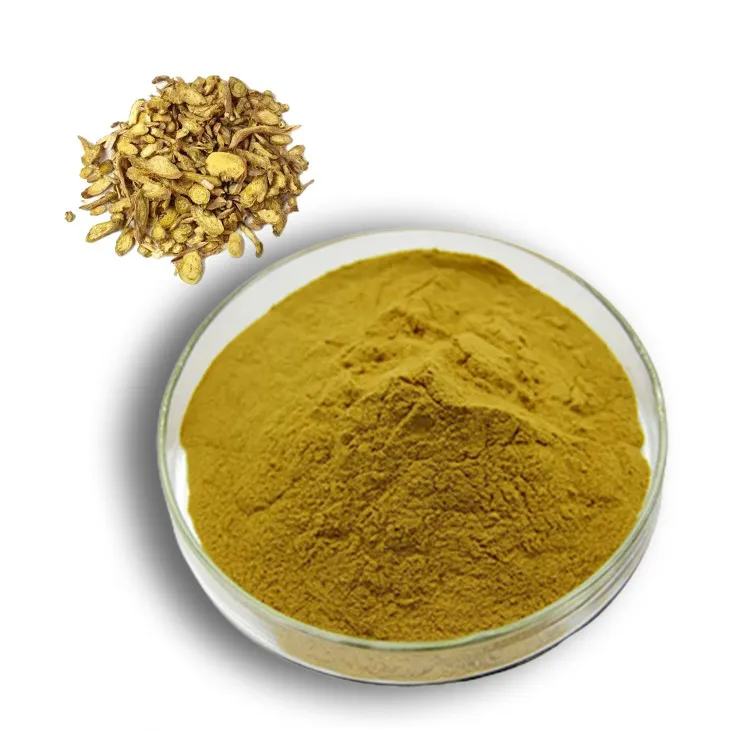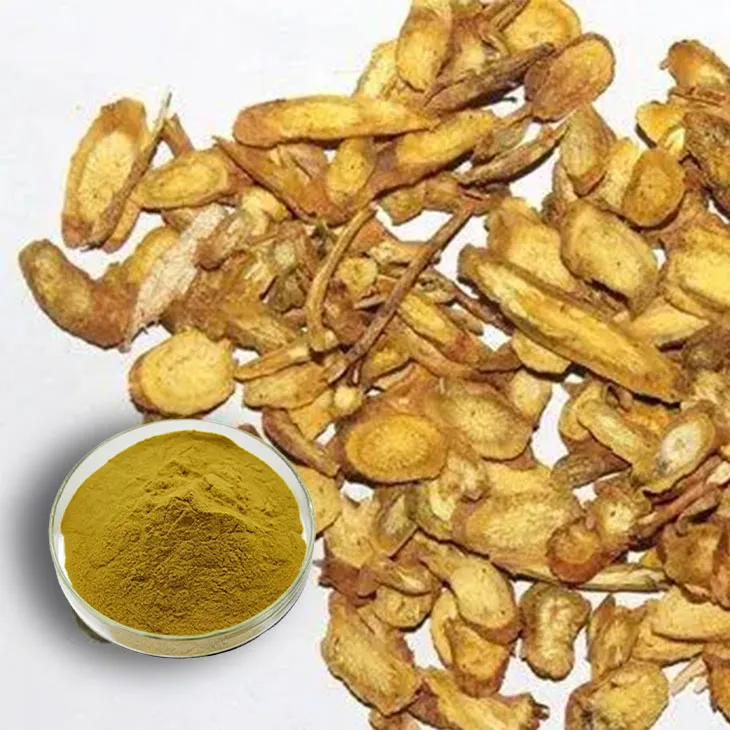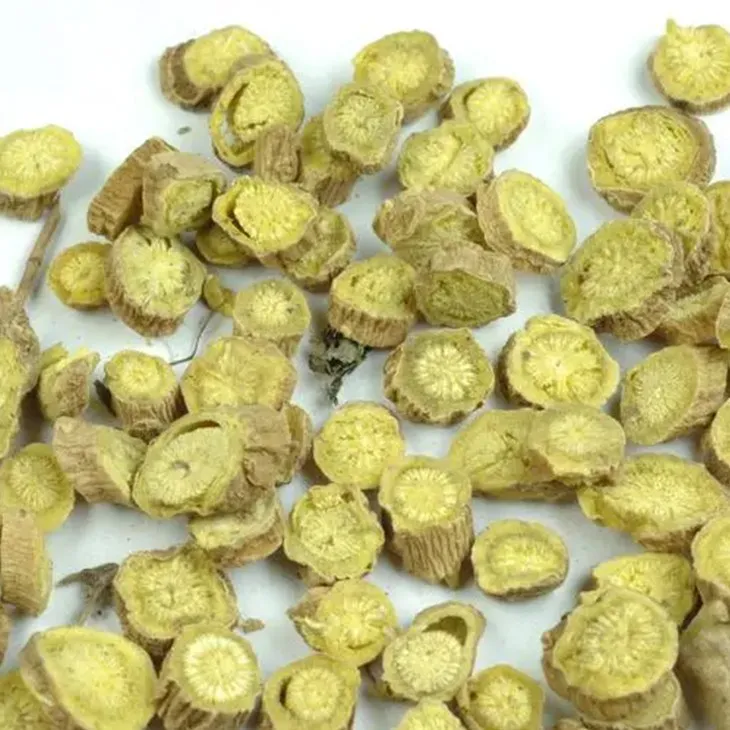- 0086-571-85302990
- sales@greenskybio.com
Baicalin: China vs. the United States
2024-11-28

1. Introduction
Baicalin, a flavonoid compound of great significance, has a rich history in China's traditional medicine. For centuries, it has been an integral part of herbal remedies in China. Meanwhile, in the United States, the study of Baicalin is also on the rise, though with some differences compared to China. This article aims to comprehensively analyze the disparities and similarities in the research, application, and development of Baicalin between the two countries.

2. Baicalin in China
2.1 Traditional Use
In China, baicalin has been used for a long time in herbal medicine. It has been applied to treat various ailments. For example, in cases of inflammation, it has been used to reduce swelling and pain. When it comes to fever, it was believed to have a cooling effect on the body. In respiratory problems such as coughs and colds, baicalin - containing herbs were often used.
2.2 Research Efforts
Chinese researchers have made substantial efforts in exploring the properties of baicalin.
- One of the important aspects is its antioxidant property. Oxidative stress is related to many diseases, and baicalin's antioxidant effect can potentially help the body combat this stress. Through various in - vitro and in - vivo experiments, Chinese researchers have been able to demonstrate how baicalin scavenges free radicals and protects cells from oxidative damage.
- Another key area is its anti - inflammatory property. Inflammation is a complex biological process, and baicalin has been shown to interfere with the inflammatory pathways. It can regulate the production of inflammatory mediators, thus reducing inflammation at the molecular level.
- Chinese researchers have also explored its potential role in treating liver diseases. The liver is a vital organ in the body, and diseases like hepatitis and liver fibrosis are major health concerns. Baicalin has been studied for its ability to protect liver cells, improve liver function, and even reverse some of the pathological changes in the liver.

3. Baicalin in the United States
3.1 Emerging Interest
In the United States, the study of baicalin is gradually emerging. American scientists are mainly interested in its potential applications in modern medicine.
- One of the significant areas is in the development of new drugs for cancer treatment. Cancer is a complex and deadly disease, and researchers are constantly looking for new compounds that can target cancer cells more effectively. Baicalin has shown some promising results in pre - clinical studies, such as inhibiting the growth of cancer cells and inducing apoptosis (programmed cell death) in certain types of cancer.
- Another area of interest is in neurodegenerative diseases like Alzheimer's and Parkinson's. These diseases are associated with the progressive degeneration of neurons in the brain. Baicalin has been investigated for its potential neuroprotective effects, such as reducing oxidative stress and inflammation in the brain, which are two important factors contributing to neurodegenerative diseases.
3.2 Differences in Research History
Compared with China, the research history of baicalin in the United States is relatively short. In China, the use of baicalin - containing herbs dates back centuries, and modern research on it has also been carried out for a long time. In the United States, the awareness and study of baicalin are more recent developments. This difference in research history has implications for the depth and breadth of knowledge about baicalin in the two countries.
3.3 Influence of Regulatory Systems and Cultural Backgrounds
The understanding and utilization of baicalin in the United States are also influenced by different regulatory systems and cultural backgrounds regarding herbal medicine.
- In the United States, the regulatory system for drugs is very strict. Herbal products are often classified as dietary supplements rather than drugs. This means that the requirements for research, development, and marketing of baicalin - related products are different from those in China. For example, in order to be approved as a drug in the US, baicalin - based products need to go through a series of rigorous pre - clinical and clinical trials.
- Culturally, in the United States, there is a different perception of herbal medicine compared to China. While traditional Chinese medicine is deeply ingrained in Chinese culture, in the US, the mainstream medical system is based on Western medicine. Herbal medicine, including products containing baicalin, is often considered an alternative or complementary approach.

4. Differences in Research Approaches
- In China, research on baicalin often starts from its traditional use. Researchers first study the historical use of baicalin - containing herbs in traditional Chinese medicine and then use modern scientific methods to verify and explore its pharmacological mechanisms. For example, if a certain herb containing baicalin has been used to treat a particular disease in the past, researchers will try to find out how baicalin in that herb works at the molecular and cellular levels to achieve the therapeutic effect.
- In the United States, the research approach is more focused on modern medical needs. Scientists look for compounds like baicalin that may have potential applications in treating major diseases such as cancer and neurodegenerative diseases. They then conduct research to determine its efficacy and safety, often using advanced experimental techniques and models.

5. Similarities in Research, Application, and Development
Despite the differences, there are also some similarities between China and the United States in the research, application, and development of baicalin.
- Both countries recognize the importance of basic research on baicalin. Understanding its chemical structure, physical and chemical properties, and pharmacological mechanisms is the foundation for further research and development in both countries.
- In terms of application, both are exploring the potential of baicalin in treating various diseases. Whether it is in China's traditional medicine - based approach or the United States' focus on modern medicine, the goal is to find effective ways to use baicalin to improve human health.
- When it comes to development, both countries are gradually moving towards more in - depth research and the development of baicalin - related products. This includes the development of new drug formulations, improvement of extraction and purification methods, etc.
6. Conclusion
In conclusion, baicalin is an important compound with different research, application, and development situations in China and the United States. In China, it has a long - standing history in traditional medicine and extensive research efforts. In the United States, although the research history is shorter, there is emerging interest in its potential applications in modern medicine. The differences between the two countries are mainly due to differences in research history, regulatory systems, and cultural backgrounds. However, there are also similarities in the basic understanding and exploration of baicalin. By comprehensively analyzing these differences and similarities, we can have a more in - depth understanding of baicalin in different regions and promote further research and development of this important compound.
FAQ:
What are the main research focuses on baicalin in China?
In China, the main research focuses on baicalin include exploring its pharmacological mechanisms. It has been used in traditional herbal remedies for centuries for ailments such as inflammation, fever, and respiratory problems. Chinese researchers have delved into its antioxidant and anti - inflammatory properties and its potential role in treating liver diseases.
What are the American scientists' interests in baicalin?
American scientists are mainly interested in baicalin's potential applications in modern medicine. They are looking at its use in the development of new drugs for cancer treatment or neurodegenerative diseases.
Why is the research history of baicalin shorter in the US compared to China?
Baicalin has a long - standing presence in China's traditional medicine, with centuries of use. In the US, the study of baicalin is a relatively new area, and it may be due to the fact that traditional Chinese medicine has a long - established history with baicalin which the US lacks. Also, the different medical research priorities and historical backgrounds contribute to this difference.
How do regulatory systems affect the understanding and utilization of baicalin in the US?
The regulatory systems in the US are different from those in China. In the US, the approval process for drugs and substances is strict. For baicalin, which has its roots in herbal medicine, the regulatory requirements can limit or shape the way it is studied and potentially used. It may require more extensive pre - clinical and clinical trials to prove its safety and efficacy compared to traditional uses in China.
What are the similarities in the research of baicalin between China and the US?
Both China and the US are interested in the potential medical benefits of baicalin. Whether it is China's exploration of its traditional uses - related pharmacological properties or the US's focus on its application in modern medicine for major diseases like cancer and neurodegenerative diseases, they both aim to understand how baicalin can be used to improve health and treat diseases.
Related literature
- Title: Baicalin in Chinese Traditional Medicine: A Comprehensive Review"
- Title: "The Potential of Baicalin in American Biomedical Research"
- Title: "Comparative Analysis of Baicalin Research between East and West"
- ▶ Hesperidin
- ▶ citrus bioflavonoids
- ▶ plant extract
- ▶ lycopene
- ▶ Diosmin
- ▶ Grape seed extract
- ▶ Sea buckthorn Juice Powder
- ▶ Beetroot powder
- ▶ Hops Extract
- ▶ Artichoke Extract
- ▶ Reishi mushroom extract
- ▶ Astaxanthin
- ▶ Green Tea Extract
- ▶ Curcumin Extract
- ▶ Horse Chestnut Extract
- ▶ Other Problems
- ▶ Boswellia Serrata Extract
- ▶ Resveratrol Extract
- ▶ Marigold Extract
- ▶ Grape Leaf Extract
- ▶ blog3
- ▶ Aminolevulinic acid
- ▶ Cranberry Extract
- ▶ Red Yeast Rice
- ▶ Red Wine Extract
-
Peppermint Oil
2024-11-28
-
Eucommia Ulmoides Extract
2024-11-28
-
American Ginseng Root Extract
2024-11-28
-
Konjac Powder
2024-11-28
-
Genistein
2024-11-28
-
Kidney Bean Extract
2024-11-28
-
Acai Berry Extract
2024-11-28
-
Sophora Flavescens Root Extract
2024-11-28
-
Ginger Extract
2024-11-28
-
Lemon Balm Extract
2024-11-28





















